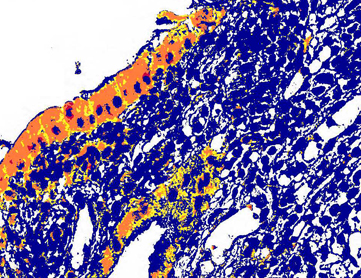Immunology
Plaque psoriasis is the most common type of psoriasis and appears as raised, red patches covered with a silvery white buildup of dead skin cells or scale. These patches or plaques most often appear on the scalp, knees, elbows and lower back. They are often itchy and painful, and they can crack and bleed.1
Psoriasis affects approximately 1% to 3% of the Canadian population.2
The burden of plaque psoriasis extends beyond the physical symptoms; its impact on physical and mental function is similar to that of cancer, depression, and many other chronic diseases.3
Janssen provides therapies for the treatment of plaque psoriasis.
For more information, please visit
[English]: http://www.livingwellwithpsoriasis.com/
2. Poulin Y, Wasel N, Chan D, et al. Evaluating practice patterns for managing moderate to severe plaque psoriasis. Can Fam Physician 2012;58:e390-400.
3. Canadian Psoriasis Guidelines Committee. Canadian Guidelines for the Management of Plaque Psoriasis, June 2009. Available at: http://www.dermatology.ca/skin-hair-nails/skin/psoriasis/#!/skin-hair-nails/skin/psoriasis/living-with-psoriasis/
Crohn’s disease is a chronic illness with no current cure; marked by inflammation that can strike anywhere in the gastrointestinal tract, most commonly in the lower part of the small bowel and the upper end of the colon.1
Ulcerative colitis is more localized than Crohn’s disease, affecting the colon including the rectum and anus, and only invades the inner lining of bowel tissue.2
One in every 150 Canadians is living with Crohn’s or ulcerative colitis – a rate that ranks among the highest worldwide.3
Janssen provides treatment for these chronic gastrointestinal illnesses and continues to support research to find a cure.
http://www.crohnsandcolitis.ca/About-Crohn-s-Colitis/What-are-Crohns-and-Colitis
2. Crohn’s and Colitis Foundation of Canada. Ulcerative Colitis. Available at:
http://www.crohnsandcolitis.ca/About-Crohn-s-Colitis/What-are-Crohns-and-Colitis
3. Crohn’s and Colitis Foundation of Canada. Facts and Statistics. Available at:
http://www.crohnsandcolitis.ca/Crohns_and_Colitis/documents/reports/ccfc-ibd-impact-report-2012.pdf
Arthritis is a leading cause of disability in Canada and about 300,000 Canadians have rheumatoid arthritis (RA). 1
Rheumatoid arthritis is an autoimmune disease that attacks the joints causing swelling, pain, inflammation and joint destruction.1
Psoriatic arthritis is another autoimmune disease that can affect people living with psoriasis. In fact, between 10% and 30% of people with psoriasis will get psoriatic arthritis. It usually begins slowly, starting in a few joints and then spreading over time to more joints.2
Ankylosing spondylitis is also an autoimmune disease. It affects between 150,000 and 300,000 Canadians. The joints in the spine are the target of the immune attack, causing pain and inflammation in the back.3
Janssen provides therapies and support for the treatment of these autoimmune diseases.
https://www.arthritis.ca/about-arthritis/signs-of-arthritis/arthritis-faq
2. The Arthritis Society. Psoriatic Arthritis:
Did you know? Available at: https://www.arthritis.ca/about-arthritis
3. The Arthritis Society. Ankylosing Spondylitis: Did you know? Available at:
https://www.arthritis.ca/about-arthritis/types-of-arthritis-(a-z)/types/ankylosing-spondylitis



